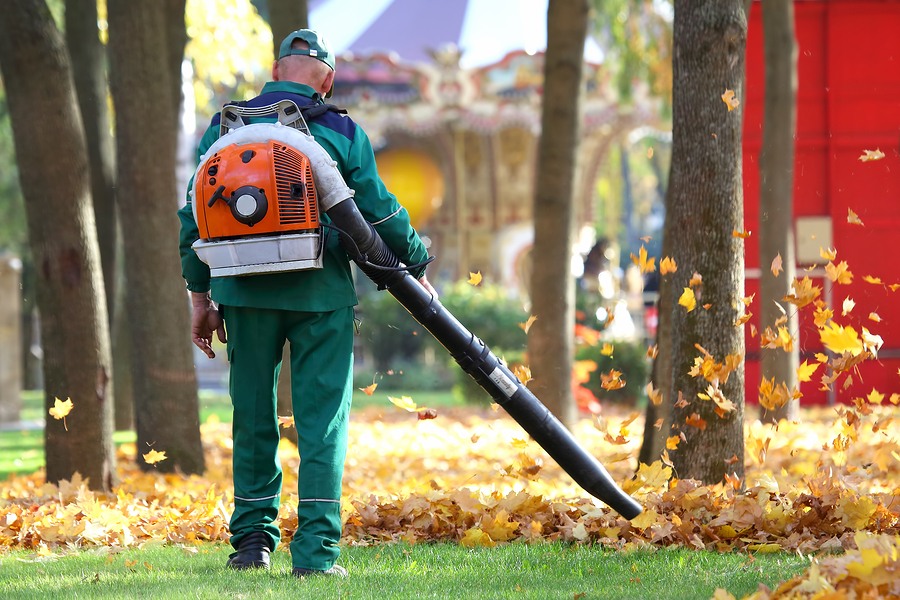It’s the time of year when every week or two, you have to put on an old tee shirt, step into a pair of comfortable worn out pants, and make your way to retrieve lawn mower, line trimmer, lawn bags, and a leaf blower.
What many people make the mistake of believing is if they buy a blower or blower-vacuum combination, they’ll never have to do anything else again. What’s more, the amount of time needed to cleanup lawn trimmings and leaves will be dramatically reduced. While it’s true that leaf blowers/vacs are great tools to making cleanup more efficient, they do not have a miracle button to press that magically does the job.
It’s also true that these landscaping tools will help to put the finishing touch on your lawn work, be that cleaning up fallen leaves, to blowing away grass clippings after mowing your lawn. The bigger the machine is, the more power and features it will have, generally speaking, which means that it will be a more versatile tool which will lend a helping hand in more ways than one. The key is to use your leaf blower in the way it was intended to get the most out of it.
Using a Leaf Blower the Right Way
Okay, so you’re probably thinking that using a leaf blower is no more difficult than just picking it up, starting it up or turning it on, and then point and shoot. However, anyone that’s used a leaf blower at least one time knows that it’s quite possible, probable, or even nearly inescapable, that painting one’s self in a corner is a reality. In other words, people pick up their blower and/or vacuum, start it and then blow leaves in one direction only to have to try and keep from blowing the ever growing pile away from itself. Wind is another factor that can cause leaves to be carried from one end of the yard to another.
Leaf blowers are versatile machines. They can take the raking out of autumn cleanup, and also double as driveway sweepers or snow clearers. Some models vacuum; others bag mulch, clean gutters, or spray trees…their power serves a purpose: Blowers are the easiest way to quickly gather big messes of leaves into manageable piles. —This Old House
To make yourself more productive and get those leaves up in a faster manner, start by placing a tarp in the center of your lawn, pinned down at all four corners with a stake or held down with rocks or bricks. Then, start at the left corner nearest your home and move to the center, blowing the leaves onto the tarp. Do yourself a big, huge, monumental favor and do not fuss over every single leaf because that’s extremely counterproductive and it will cost you a lot of frustration and time. Once you’ve gotten the first corner space cleaned up, cinch-up the tarp and empty it into a composting pile or into a trash bin.
Then, go to the other corner nearest your home and repeat the process. Do the same for the corners nearest the street, toward the center. While this will leave some leaves sprinkled across the lawn, those will be very easy to rake into a small pile and dispose of in the same manner as the other four piles.
Choosing a Leaf Blower
Having the right machine on-hand means choosing a leaf blower that truly fits your needs. Size and scale are quite important, meaning that if you have an average sized yard, you don’t need an industrial sized model. Most all blower-vacs will require some form of hearing protection, even the electric can be loud enough to cause your ears to hurt. There are a number of models and their versatility, as well, as power source, will be the deciding factors:
- Electric blowers. These come in corded models and cordless models. If you choose a corded model, ensure that you have an extension cord that’s long enough to reach beyond the borders of your yard. Cordless models will be more convenient because of their mobility, but will have less power and battery drain will be in-play.
- Gas blowers. These are among the most powerful, also the most noisiest, and will emit fumes. These models typically take a mix of gas and two-stroke oil, which means you’ll need a gas can and bottles of the right oil. Because these have an engine, you’ll have to keep the air filter clean and occasionally replace the oil filter and spark plug.
- Combination blowers, vacuums, mulchers. These models are quite versatile but not necessarily as powerful as their gas cousins. In addition, you’ll find that these can easily clog when vacuuming and the mulching might be slow and tedious.



